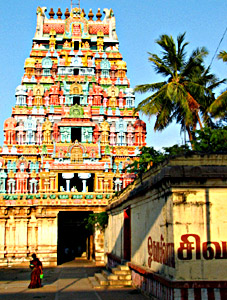 The features of the Nayaka sculptures apparently show the impact the Dravidian style of art and architecture had on them. In fact the Dravidian architecture was at its zenith when the Nayaka art and architecture evolved. One of the noted Nayaka monuments is the temples in Madurai. The key features of the Nayaka architecture are the elevated and grand gopurams, mandapas with hundred pillars and the well carved figurines. Apart from these the other features of Nayaka sculpture are the closed prakarams with huge pillars and the brackets, the carved figures of the animals and humans riding horses and carved pillars.
The features of the Nayaka sculptures apparently show the impact the Dravidian style of art and architecture had on them. In fact the Dravidian architecture was at its zenith when the Nayaka art and architecture evolved. One of the noted Nayaka monuments is the temples in Madurai. The key features of the Nayaka architecture are the elevated and grand gopurams, mandapas with hundred pillars and the well carved figurines. Apart from these the other features of Nayaka sculpture are the closed prakarams with huge pillars and the brackets, the carved figures of the animals and humans riding horses and carved pillars.
The temples in Madurai have concrete and mighty boundary walls around them. The temple complex has store rooms, sub shrines, square water tanks for ritual bathing, pillared mandapas and the usual `parikramapatha.` Religious residences are also part of the temple complexes. Temples with such Nayaka features are Shiva temple at Chidambaram and Vishnu or Ranganath temples at Srirangam.
Another famous temple built by the Nayaka rulers is the Meenakshi Temple at Madurai. There are two temples here. While one is dedicated to Sundareswara, the other to his consort, Meenakshi. There is a garbhagriha, lofty and intricately designed gopuram. In fact the gopuram has nine storeys.
Carved pillared corridors are also part of the features of Nayaka sculpture.



















